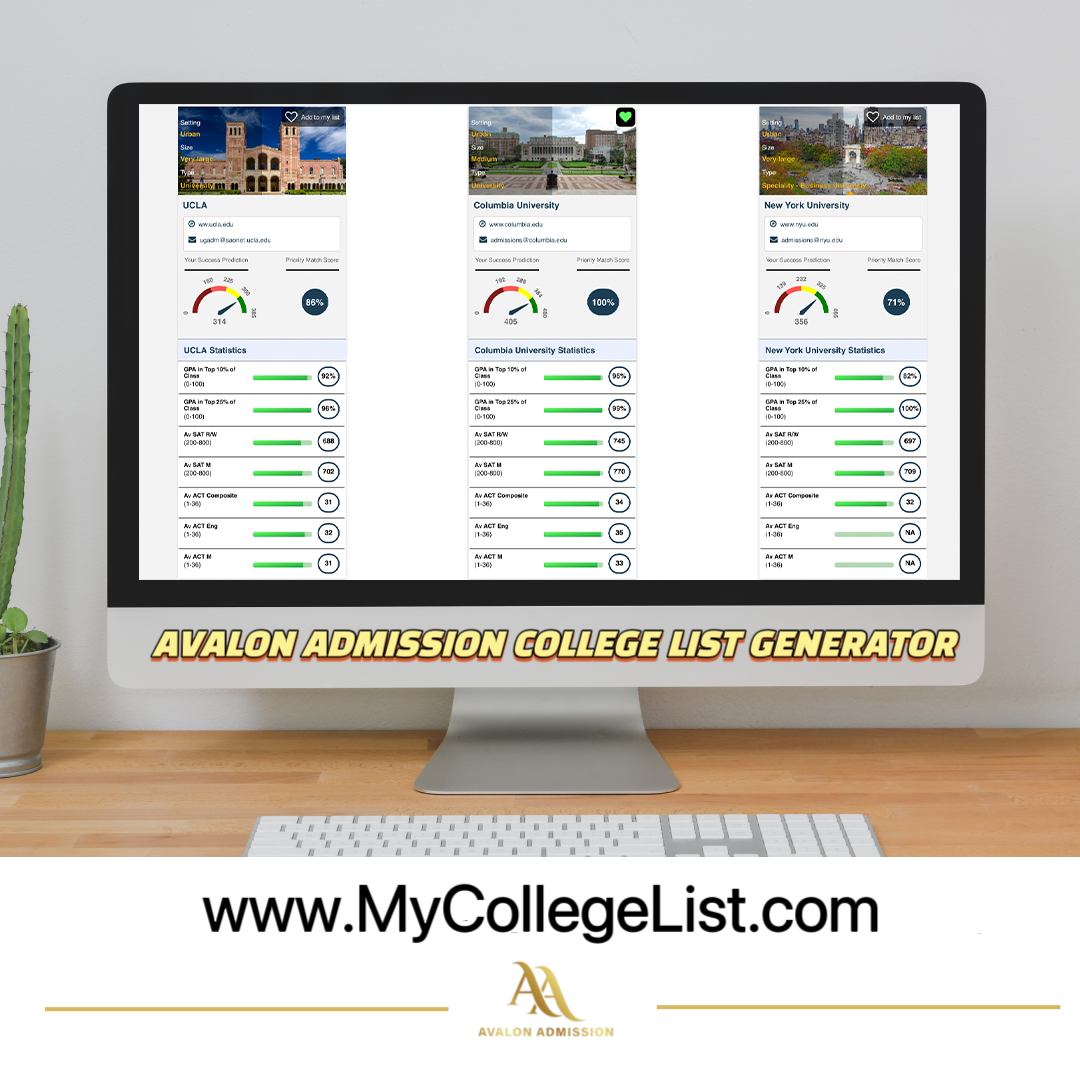One of the most important and misunderstood steps in successful college admission occurs right at the outset: the creation of a logical, sensible, and aspirational college list. In many ways, the college list drives the process because it determines what you need, where you should visit, and even decisions as basic as which courses to take and which extracurricular activities to choose. It is likely that the first college list you see will come from your school’s guidance department. However, this can be problematic and even misleading. College lists provided by schools typically include many colleges you’ve never heard of and don’t want to go to. That is because school guidance departments tend to be overly cautious, focusing mainly on schools that you are likely to get into at the exclusion of schools that are possible and more attractive, but that might require a bit more effort to get into. These aspirational colleges should be considered and not excluded from your list. The truth is that the person creating your school-generated college list doesn’t really know you and is faced with the daunting task of creating lists for perhaps hundreds of students. They don’t have the time, the understanding, or the overarching motivation to help you create illogical, sensible, and aspirational college list. As a result, you cannot and should not depend on your school counselor to create your college list.
On the other hand, your counselor can be quite helpful once you have provided enough input to help identify a list that truly reflects not only your ability but your priorities. They do their best with the daunting task they are given, but their information and resources are typically quite limited. You can consider their list, but each college that makes your final list should be well researched and should fall into one of three categories:
- Safety – Colleges you are likely to get into
- Target – Colleges you have a good chance of getting into
- Reach – Colleges you could get in if your profile reveals a confluence of factors.
It is true that GPA, academic rigor, and, in most cases, test scores are among the most important categories of information colleges look for in their candidates. But there are other factors that can sway a decision in your favor. Some of these factors include special talent, special accomplishments, character, diversity and adversity, unique skill set, choice of major, essays, and recommendations. Most important, all these factors can be strengthened, both by decisions that you make along the way and by the portrait of yourself that you create on your application. I will explain more about this in subsequent articles.
To create a truly aspirational college list, you should include only a few safeties, several targets, and several reaches. The reason for this is that safety schools are, by definition, schools that you should get into but don’t want to go to. Targets should make up the bulk of your acceptances, giving you plenty of options to choose from. As for reaches, all it takes is one to make you a very happy camper. Aspirational college lists will yield more rejections than will a “safe” list, but as long as you are emotional prepared to receive several rejections to go along with your acceptances, you will be far better off creating a list of colleges that tips toward “aspirational” and away from “safe.”
If you are not sure where to begin, you could try going to mycollegelist.com. This is a free service offered by Avalon Admission. There, you will be asked to take two surveys: one brief survey to identify your college preferences and a longer survey to identify the aspects of your profile that will make admission highly possible, possible, unlikely, or highly unlikely. It also serves as a “what if” engine in which you can change your data points and see how it affects your admission chances.
Neil Chyten, Founder
Avalon Admission

